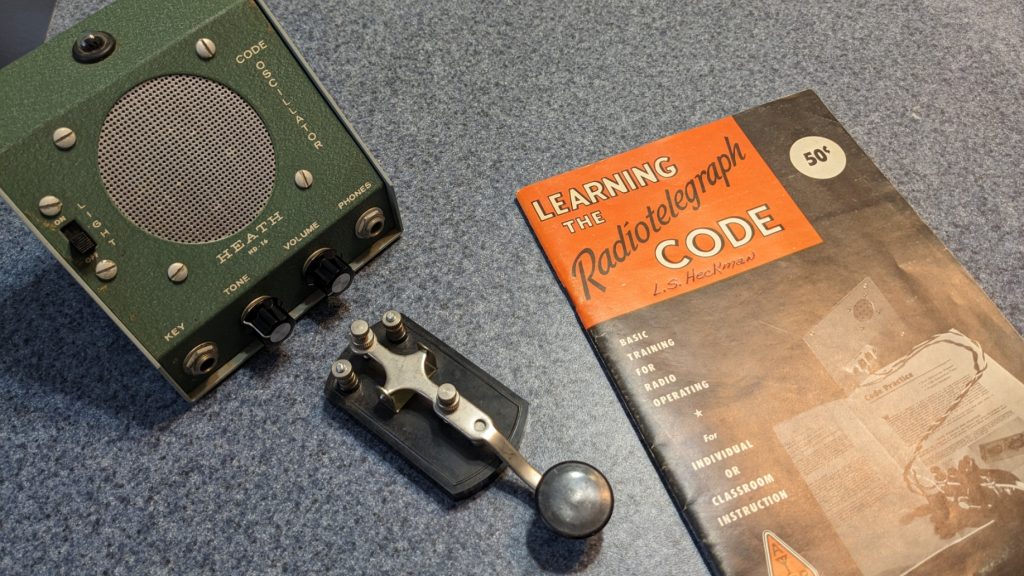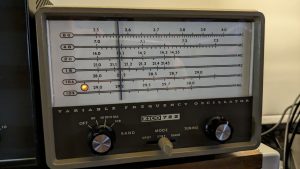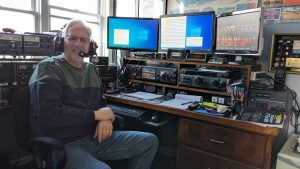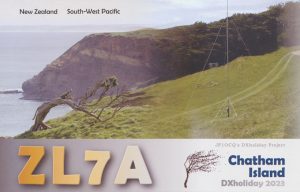Many older hams were forced to learn CW as a requirement to be licensed. Though there are many reasons why it is no longer required, it is still a popular mode used by many hams. Hams who were not required to learn CW are taking it up, and enjoying it because it can be quite fun and challenging.
But many hams who decide to try and learn CW, often tend to gradually give up, for various reasons. Certainly the motivation factor is lower if not required to pass a Morse code sending and receiving test. Several factors are discussed in this video.
Before I discuss how I would learn it today if I wanted to operate CW, I’ll talk about how I actually did it.
In the summer of 1971, I was committed to getting a ham radio license. I needed to learn the code. I figured I need 4 things:
- A radio capable of receiving CW
- A code practice oscillator
- A CW key
- A book about learning CW
This was 1971, so there weren’t many other ways. I suppose maybe cassette tapes or 33 rpm vinyl records were available. I didn’t have a cassette player, and records seemed not very user friendly. Our record player was in our living room, not ideal for code practicing. Plus finding them was not easy. No internet. I was not getting QST yet.
I talked my Dad into buying me a used Hammarlund HQ-110 for $100, from a Kodakery ad from a ham in Greece (NY). Cheaper and quieter than the drum set they never got me. One step accomplished.
I managed to get a Heathkit HD-16 Code practice Oscillator as a kit, and built it. I think it came with a key with a plastic base. I also obtained the ARRL book, “Learning the Radiotelegraph Code” (50 cents). Here is the evidence (I could not find my original book, so I bought another one).

I did have an elmer (mentor), but I think he might have sent me code once or twice. I learned by reading the book, and mostly by sending code. The book has you learn 5 characters at-a-time. I don’t remember exactly how many days I waited to start the next group, probably only one or two days. I started to listen to W1AW ARRL code practice on a receiver, so I knew what good code sounded like. I would then practice sending the letters as I learned them, always mimicking the dit and dah timing and spacing I heard on W1AW. Once I had worked through all the alphabet and numbers and learned them well enough that I could practice sending them on the oscillator, then the sounds started to sink in. Then I started trying to copy W1AW code practice. I believe in those days they had two separate sessions, one day slow (5, 7.5, 10 wpm or similar), and next day faster (13, 15, 18, 20 wpm). So every other day I could practice receiving at 5 WPM, and it might have been only 10 minutes or so. At some point I could listen longer and try 7.5 wpm, etc.
On days W1AW was sending faster practice, I would try copying actual QSOs on 80 and 40 meters. This helped, as I got the flow of a QSO and started learning Q signals and common abbreviations. I also heard good and not so good code, and dealing with QRM, weak signals, noise. One other resource that helped me was the ARRLs “Operating an Amateur Radio Station” (25 cents). For some reason I have a 1969 printing and a 1971 printing. The 69 version is only 19 pages, the 71 version is 31 pages. But in these small publications was a wealth of info helpful to someone starting out.

I even recall that summer when I went with my parents to a cousin’s wedding in Connecticut, I found that my Uncle had a shortwave receiver, and I even copied W1AWs code practice while on vacation! The next day, my Dad drove me up to Newington and we visited W1AW and ARRL Headquarters.
Anyway, by October, I think I was solid at 7.5 wpm, so I scheduled my novice test. Being on the air was the best practice after that. I guess my point is, that even without all of the learning aids, websites, G4FON, apps, etc, one can learn the code all by themselves when committed to it. Certainly there are exceptions, but I think people put too much emphasis on how hard it is. It really isn’t. I took typing class in high school, and code was much easier to learn.
In 1971, I had a non-renewable novice license good for two years. My choices were to either become a Technician by just passing a theory test that was the same as a General Class, or get up to 13 wpm and take the General. Technician Class license had NO HF privileges at that time. So I had to keep working at it. On the air helped, but I also kept copying W1AW code practice. The theory test was not easy either, as question pools were not widely available (if at all?), especially not the answers!
If I wanted to learn code today, how would I approach it? As I said, there are many tools available, but the one that I think I would use is the Long Island CW Club. I won’t go into detail, but I would recommend watching this presentation https://www.youtube.com/watch?v=DLZ0HKhEoCM.
I like the way they approach the learning of CW, and it is well explained in that video. I have not seen anything else that covers all of the aspects of learning the code the way they do. It might cost you a bit to join and/or signup for classes, but it isn’t expensive, and hopefully by now you have learned how to do Zoom meetings.
One other piece of advice I would give, is learn CW with a straight key. I think forming the characters with your own hand helps the sound and feel of the characters. Once you master the code, if you improve your speed up over 18 wpm, then a paddle/keyer might be in order.
But if you would rather take the same approach I did 52 years ago, have at it!





